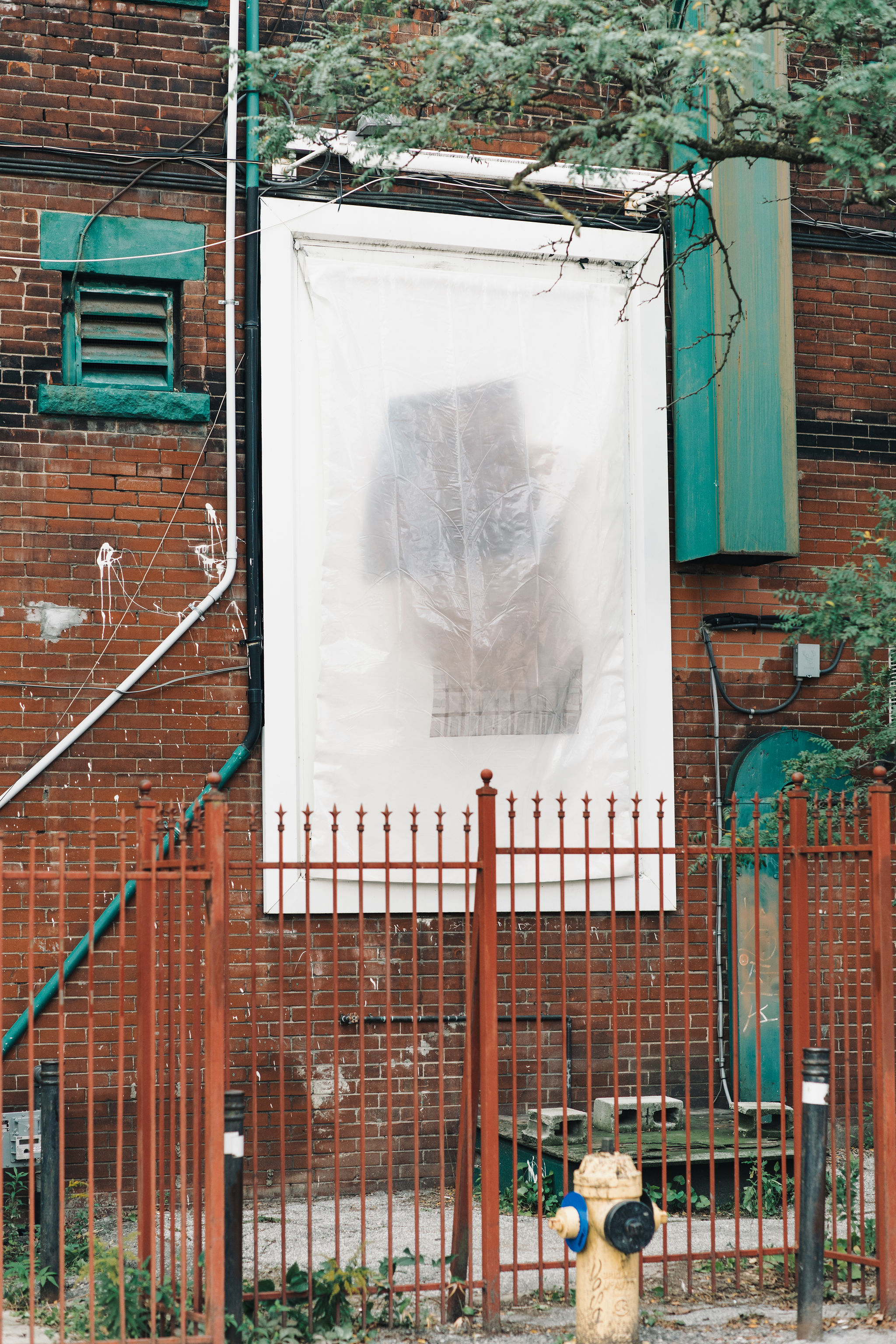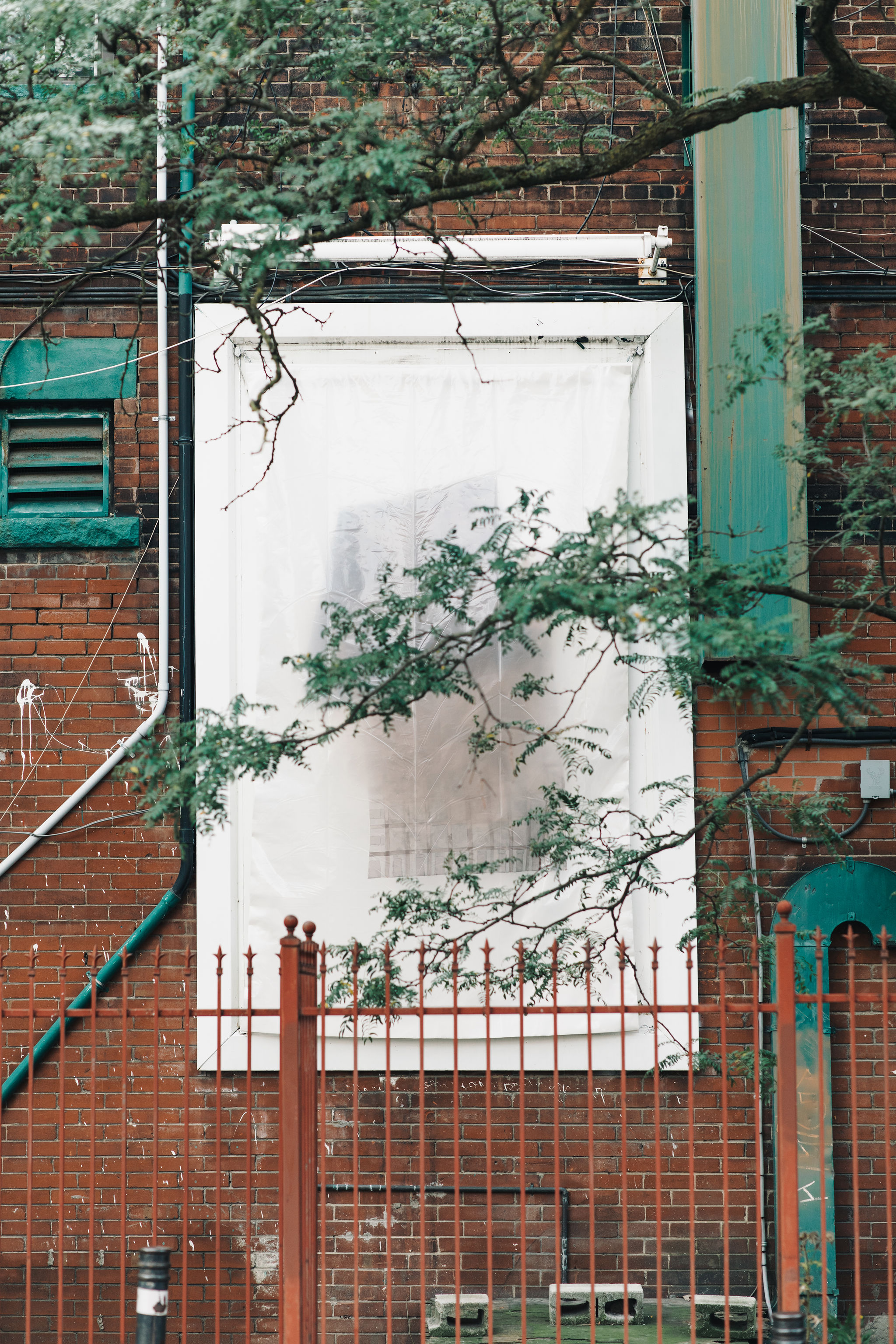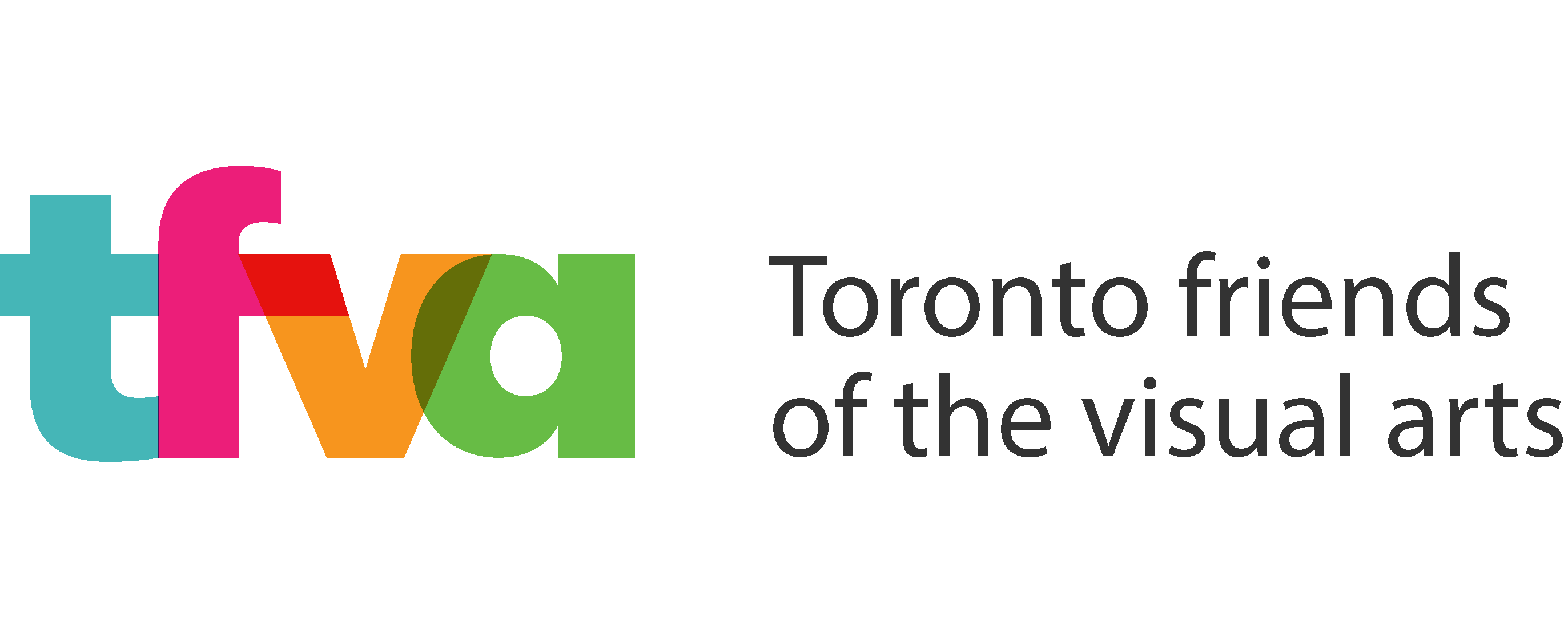SPACE invites one artist to produce a yearlong series of images for a public-facing billboard located on the east façade of Mercer Union.
Mercer Union’s SPACE billboard commission has invited artist Ella Gonzales for its 2024–25 season for a yearlong series titled, Sleeve. Gonzales, whose practice engages the endless depth yet impenetrable border of the picture plane, is a painter with a style for soft pigment washes and hard-edged geometries that soothe the eye as much as they tease the mind. The conceptual and technical interests of her works, be they wall-bound or sculptural, are twined in a deeply personal study of migration and diaspora.
Her intuitive and expertly drafted x-rays of built structures invite a dreamlike navigation of spaces, places, and times that remain inconsumable, just slightly out of reach. To these pictorial volumes, Gonzales often adds dimension by using layers, opacities, creases, and folds as an infinitely variable language for orienting to her subject. At Mercer Union, her paintings engage a new form, introducing materials like vinyl and polyethylene as companion surfaces that hold, protect, obscure, and disrupt the composition. Over the course of one year, Sleeve plays with the billboard site by iterating gestures within a single shell. Collapsed organza, Piña and Jusi silks painted with acrylics appear and accumulate, in a slow reveal of three sculptural banners or perhaps, three distinct moments in a single work always in the process of becoming.
Sleeve: which cannot be reduced is the first edition in the yearlong series, accompanying the work is a text by Nestor Kruger.
Ella Gonzales: Layerer¹
Ella Gonzales identifies as a “1.5 generation” immigrant, a fractional distinction that locates a subject between two states. The digital interiors she constructs in CAD² as a prelude to her paintings provide a novel form for examining this quality of in-betweenness. Ella creates her complex, layered spaces in CAD by subdividing a model of three-dimensional space with a series of semi-transparent flat planes. The computed representation of perspective and colour interaction, provided by the computer, creates an illusion of deep space. Ella’s new work Sleeve approaches the process of layering in a different sense. It is this difference—how acts of layering occur in the physical world versus its digital counterpart—that prompted me to ask ChatGPT the following question:
How is the pixel value typically calculated when two images in separate layers blend in an image editing program?
The response I received from the Large Language Model (LLM)³ contained a list of different equations for common blending modes found in image editing software, like this one:
Result=α×A+(1−α)×B
The symbol “α” represents the level of opacity of the top image, with 1 being fully opaque and 0 being fully transparent.
To bring about a more precise question, I followed the above question with a question on writing a question:
How would you rewrite this question: How is the pixel value typically calculated when two images in separate layers blend in an image editing program?
I received an immediate response from ChatGPT that felt oddly enthusiastic. The LLM listed five different possibilities for rewriting the question, but the one I preferred contained the preposition “across” to link the two object layers.
How does an image editing program calculate pixel values when combining images across layers?
The use of “across” felt poetic to me. It conjures a spatial and temporal divide that infinitely extends in opposite directions. In CAD, however, like in image editing programs, no space exists when blending two seemingly discrete digital objects. The image exists on a single layer and a change in pixel value creates the illusion for the viewer of one object on top of another. The change in pixel value that occurs in the act of layering in CAD is different from what occurs in our physical reality when layering one object on top of another. There are immutable laws that prevent an object from occupying the same space as another object. Instead of a change in value, matter resists and repels, unless subjected to the extreme conditions of heat and pressure.
If I think of Sleeve as a type of analog for a dynamic digital screen, then the “thickness of matter”⁴ that will accumulate in Sleeve over time has as much to do with resistance as it does with change linking the experience of touch and memory across material and immaterial realms. Sleeve literally creates an in-between space, a space charged by a myriad of complex material and virtual interactions that captivatingly resist any attempt to crystallize into a single message.
— Nestor Kruger






